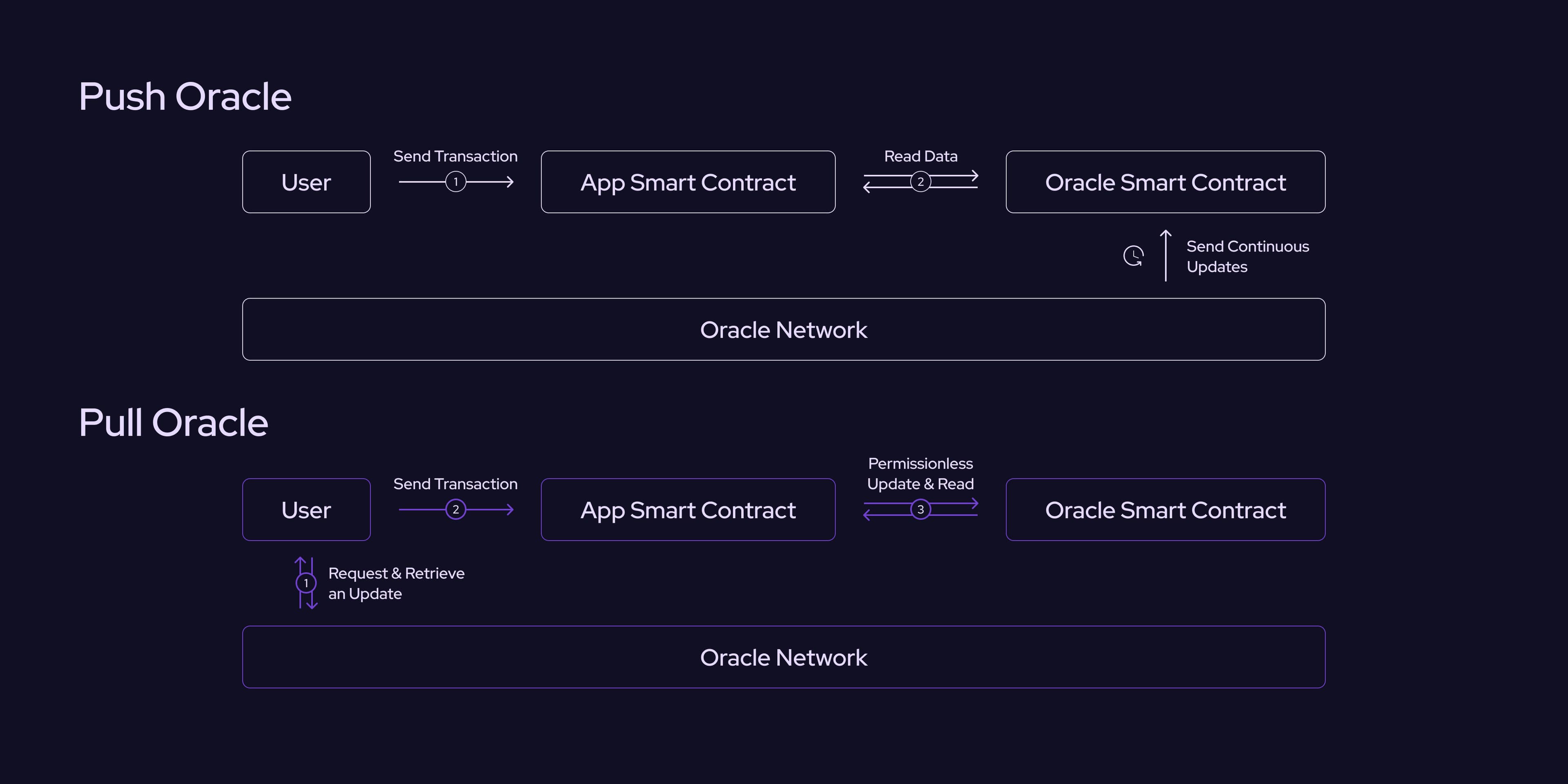What is a Pull Oracle?
Learn how Pyth's pull oracle model differs from traditional push oracles
Most oracles today are push oracles where the oracle operator is responsible for submitting price updates to the blockchain. Pyth is different: it is a pull oracle where anyone can permissionlessly update the on-chain price. This document explains the differences between push and pull oracles.
Push Oracles
Push oracles periodically update an on-chain price based on external trigger conditions. The oracle has a smart contract that stores the current price. The contract also has a set of permissioned operators who are authorized to update the price. The oracle operators then commit to updating the on-chain price at a specific cadence, for example, once every 30 minutes or if the price moves by 1%. Thus, in a push oracle, the on-chain price is periodically updated, regardless of whether or not anyone is using it.
Pull Oracles
In contrast to push oracles, pull oracles only update the on-chain price when requested. There are different ways for users to request an updated price from a pull oracle. Some pull oracles respond to on-chain requests: applications send one transaction to request data from the oracle, which then submits the response in a second transaction. Pyth uses a simpler system where users can request the latest price update from an off-chain service. Anyone can submit a price update to the on-chain Pyth contract, which verifies its authenticity and stores it for later use. This system allows applications to use a single transaction flow that first updates the price then performs the necessary application logic.
For a more in-depth explanation on the differences between push and pull oracles, refer to the following video tutorial: How to Build with Pyth's Pull Oracle Design: Pyth Tutorials
Comparing Push and Pull

Push and pull oracles differ on a number of important dimensions:
- Update frequency -- In a push oracle, every price feed updates at a fixed update frequency. The oracle operator determines the frequency, but it typically ranges from every 10 minutes to 1 hour. In contrast, pull oracles can update at a much higher frequency. For example, every Pyth price feed updates every 400 milliseconds.
- Latency -- An oracle's update frequency also affects its prices' latency. The higher update frequencies of pull oracles allow applications to access lower-latency data.
- Blockchain support -- Pull oracles support a wide variety of different blockchains. Push oracles typically support a smaller number of blockchains, as each additional chain requires ongoing gas expenditures.
- Price feed selection -- Similar to the item above, pull oracles also support a wide selection of price feeds. In contrast, push oracles typically have a more limited selection. Push oracles generally cannot support a wide selection of feeds due to the gas cost of periodically updating each feed.
A fundamental reason for these differences is that push oracles incur gas costs for price updates. These gas costs limit their scalability across all of the dimensions above.
Integration Differences
Push oracles and pull oracles require applications to integrate in different ways. With a push oracle, applications typically read the current price out of a smart contract. Since the push oracle periodically updates the price, the application can assume the data in the smart contract is (reasonably) fresh. With a pull oracle, applications need to update the on-chain price before reading it. Developers using Pyth can refer to How to Use Real-Time Price Data to learn how to perform these steps.